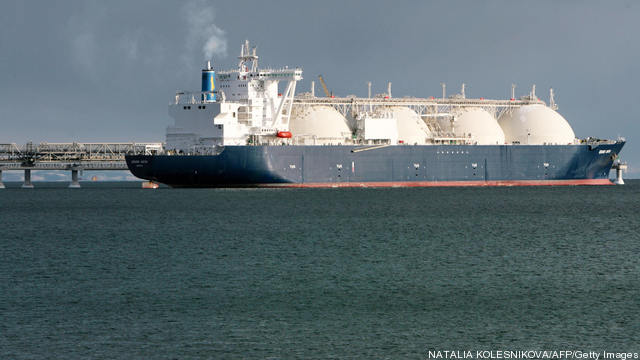Just a few years ago hopes were running high Down Under. Liquefied natural gas (LNG) prices were increasing almost every month on the back of increased gas demand from Japan amid the shut down of its 50 nuclear reactors after the Fukushima nuclear accident in March 2011.
Australia, who had already begun an unprecedented LNG project building frenzy, picked up the pace even more, which seemed logical given commodity prices and market dynamics at the time. Their geographical proximity to the world’s largest LNG market, Asia Pacific, and major LNG importers, Japan and South Korea, proved irresistible.
But time finally caught up with the Aussies. Since many of the projects were being constructed in remote regions of the country, including Western Australia, and since there was a severe shortage of skilled labor needed to build these projects, construction costs, mostly on the back of spiraling labor costs mounted. Most of the country’s projects have gone woefully over budget, while other once-ambitious project proposals have either been postponed of cancelled.
Added to the fray, was another unprecedented development – record shale oil and natural gas production in the US. As the US passed Saudi Arabia and Russia last year to become the largest oil producer on a total liquids basis, the market became awash in oil, and prices plunged, off by nearly 60 percent between last June and the start of the year. Though prices have trended upward sine the start of the year, they are still off around 40 percent from this time last year. LNG prices in Asia Pacific, which are linked to oil prices and oil products, tumbled in response. From just over $20 MMBtu at the start of last year, spot prices for the super chilled fuel in Asia now hover just over $7 per MMBtu.
It is against this backdrop that Chevron-Australia Managing Director Roy Krzywosinski took the stage at an Australia Petroleum Production and Exploration Association meeting in Melbourne on Wednesday. Two concerns are pressing on the oil executive’s mind. The first is the concern that service providers in Australia won’t be able to service all of the country’s LNG projects once they finally come on-stream. Maintenance work for these projects will require thousands of highly skilled contractors. Bernadette Cullinane, Managing Director of Accenture Australia, said a survey of LNG operators and service companies in the country shows several worries about the sector’s ability to cope, particularly while working in remote regions.
The second concern for Krzywosinski is once again, high costs. He said that a major contributor to Australia’s falling international competitiveness was the cost of doing business in the country. He cited research by the Business Council of Australia which found that the cost of building a greenfield LNG project in Australia soared to 40 percent above that of building a project on the US Gulf Coast. He also noted that even though there was significant demand for LNG in the next 10-15 years, around 440 million tonnes per year, double today’s production, Australia had not seen a positive final investment decision since 2012.
Krzywosinski has cause for concern coming from his American counterparts. While Australia’s LNG sector is wallowing in budget over runs and finger pointing, US firms, for their part, seem to being getting it right. To date, even with a slow and cumbersome Department of Energy (DOE) approval process and a less than hydrocarbon friendly Administration in the White House, four LNG export terminals are under construction in the US, while Cheniere Energy’s Sabine Pass terminal on the Gulf coast is earmarked to export first gas by the end of the calendar year.
Juxtaposing the cost of the US’ first LNG export terminal with several Australian LNG export terminals helps illustrate the problem facing the Aussies. The price tag of the Sabine Pass terminal is placed at US$18 billion, arguably an impressive sum. However, the price for Chevron-Australia’s two LNG projects in Western Australia, the Gorgon Project which is due to start this year and the Wheatstone project, is huge – totaling around US$80 billion. Its Gorgon project alone costs a whopping US$54 billion, US$17 billion over budget. LNG projects in Queensland, are also pricey, for example, the Queensland Curtis LNG project cost over US$20 billion. The Ichthys LNG project in northern Australia, owned by Japan’s Inpex and French oil major Total, has an estimated price tag of US$34.5 billion, but could come in as much as US$10 billion over budget.
Earlier this week, US Energy Secretary Ernest Moniz said at a conference that, “Certainly in this decade, there’s a good chance that we [the US] will be LNG exporters on the scale of Qatar, which is today’s largest LNG exporter.” He added that the surge in US output from shale development has already transformed the global market. All of this, in addition to the ability for US LNG projects to come on-stream at around 40 percent of Australia project costs, and the ability for US projects to tap cheaper domestic Henry Hub prices for export, should not only keep Mr. Krzywosinski up at night, but all of those working in Australia’s LNG sector are likely looking over their shoulders as well.

